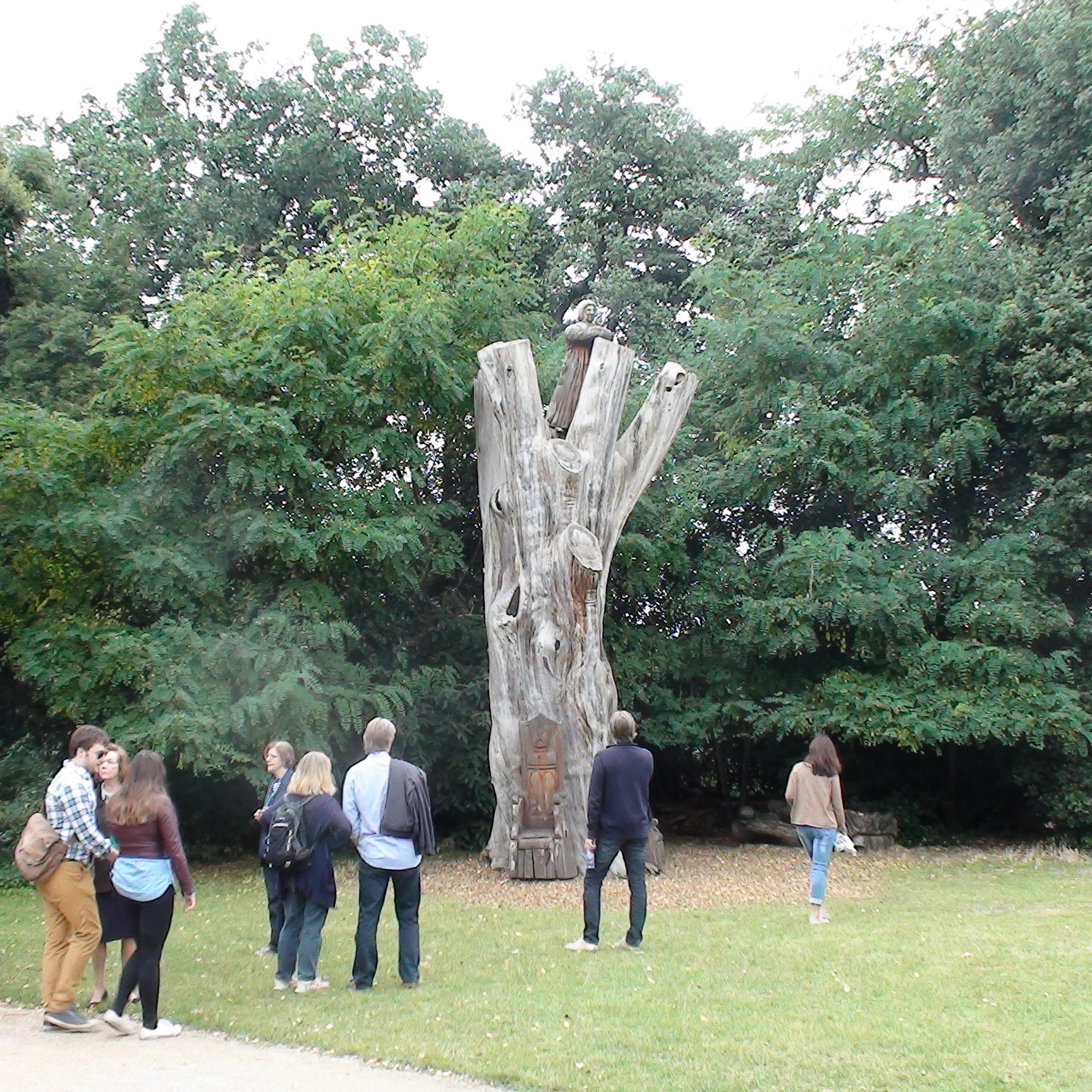Erection date: 2007
The book he holds has "MPM FEBM" on the back cover and "DAM MPM" on the front cover. Perhaps these initials relate to the Moorhouse family who funded these sculptures.
Site: Four bishops up a tree in Fulham (5 memorials)
SW6, Bishop's Avenue, Fulham Palace Gardens
Londonist brought this engaging multiple memorial to our attention. Information about visiting Fulham Palace.
Bishop Porteus looks out confidently from the top of the tree while, a little lower down, Bishop Creighton peers out between two branches. At the back, chubby Bishop Bonner stands guard at eye level, and, behind the lady in jeans to the right, Bishop Compton lies relaxing on a horizontal trunk.
In addition to these four bishops there are other random items carved in wood: a cat atop a pile of books (one spine reading "LMAAXIINIM") and some bishops' thrones. Bishop Bonner is holding a glass and, look carefully, you can see a bottle poking out from Bishop Porteus's robes. Medicines we are sure.
The nearby information board reads:
"The Bishops' Tree highlights the Bishops who made the most significant contributions to the Gardens at Fulham Palace. It is formed from a Cedar of Lebanon felled in 2006 due to decay. The sculptures were carved by Andrew Frost in 2007 and donated to the Palace by Dolores Moorhouse in memory of her husband, Peter.
At the top of the tree is Bishop Porteus (1731 - 1809). He followed the fashion for the picturesque in the grounds where he made a rustic grotto and planted a grove of trees with a 'narrow retired walk behind, called the Nun's Walk'. Victorian bishops took an interest in the surviving rare trees and added to the collection, including Bishop Creighton (1843 -1901), who is shown climbing up the tree. He was an important historian and is commemorated in the east window of the Chapel.
The nearby oak bench shows Bishop Compton (1632 - 1713) a keen plant collector. He imported plants from all over the known world including the Magnolia virginiaan from America which was grown for the first time in Europe at Fulham. The grounds became famous and visitors such as John Evelyn came to see the exotic plants and trees. A map of 1745 shows a sequence of old-fashioned formal gardens at Fulham long after Compton's death. None of his original trees survive, but species he grew are represented such as the magnificent black walnut (Juglans nigra) on the east lawn and the cork oak (Quercus suber) near the Chapel."
2018: Londonist visits again.

















Comments are provided by Facebook, please ensure you are signed in here to see them